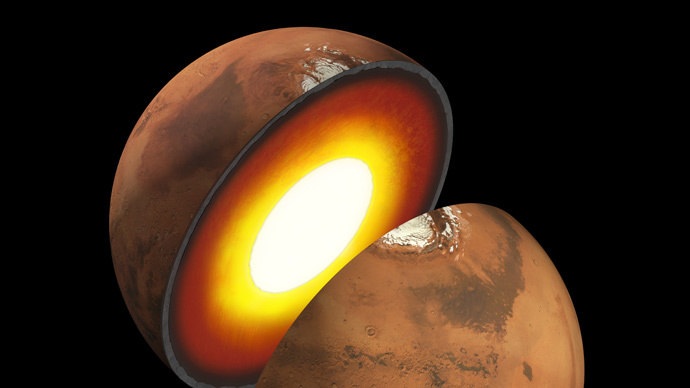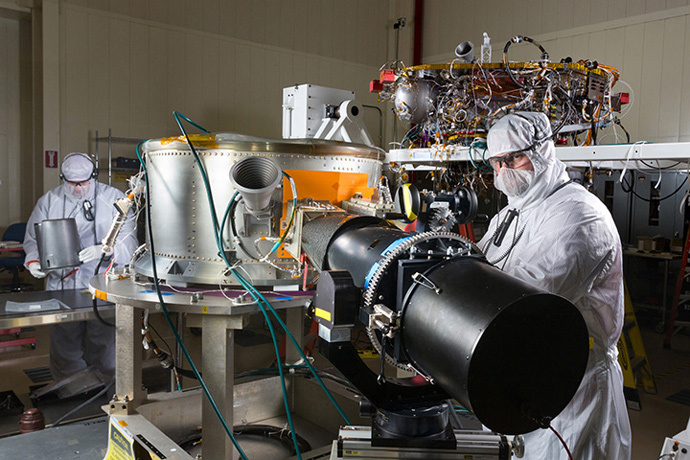‘More than a Mars mission’ – NASA begins testing InSight lander for 2016 trip

NASA says it’s begun testing the stationary lander spacecraft it plans to send to Mars in 10 months to help scientists understand Earth’s red neighbor and hopefully learn more about rock-based planets.
The space agency said on Wednesday this week that testing is
underway on the Lockheed Martin-made lander it calls InSight—an
abbreviation for Interior Exploration using Seismic
Investigations, Geodesy and Heat Transport.
Currently, NASA intends on launching InSight from Vandenberg Air
Force Base in California in March 2016 and having the spacecraft
land on the Red Planet around six months later.

According to the agency, the lander is equipped with an array of
sophisticated scientific tools intended to study the crust,
mantle and core of Mars. Ideally, NASA says the data will help
scientists figure out the secrets of Mars’ interior structure by
“detecting the fingerprints of the processes of terrestrial
planet formation.”
InSight, NASA says, “is more than a Mars mission-- it is a
terrestrial planet explorer that will address one of the most
fundamental issues of planetary and solar system science -
understanding the processes that shaped the rocky planets of the
inner solar system (including Earth) more than four billion years
ago.”

The more scientists learn about Mars, the better they can prepare
to someday send an astronaut on the 140 million-mile journey. As
it stands now, NASA hopes to accomplish as much sometime in the
2030s.
Among the tools outfitted on the car-sized InSight are a probe
that will be used to measure the planet’s seismic activity and
heat flow, NASA said. Additionally, the scientists intend on
deploying two small satellites along with the lander that will
transmit data from InSight back to Earth.

"Today, our robotic scientific explorers are paving the way,
making great progress on the journey to Mars," Jim Green,
the director of NASA's Planetary Science Division, said in a
statement. "Together, humans and robotics will pioneer Mars
and the solar system."
"The assembly of InSight went very well and now it's time to
see how it performs," added Stu Spath, the InSight program
manager for Lockheed. "The environmental testing regimen is
designed to wring out any issues with the spacecraft so we can
resolve them while it's here on Earth. This phase takes nearly as
long as assembly, but we want to make sure we deliver a vehicle
to NASA that will perform as expected in extreme
environments."

Last month, a report revealed that Curiosity, a roving spacecraft that’s been conducting tests on Mars since 2012, determined that the presence of liquid brine beneath the planet’s surface contradicted previous theories that the Martian atmosphere is too arid and cold to host water.












